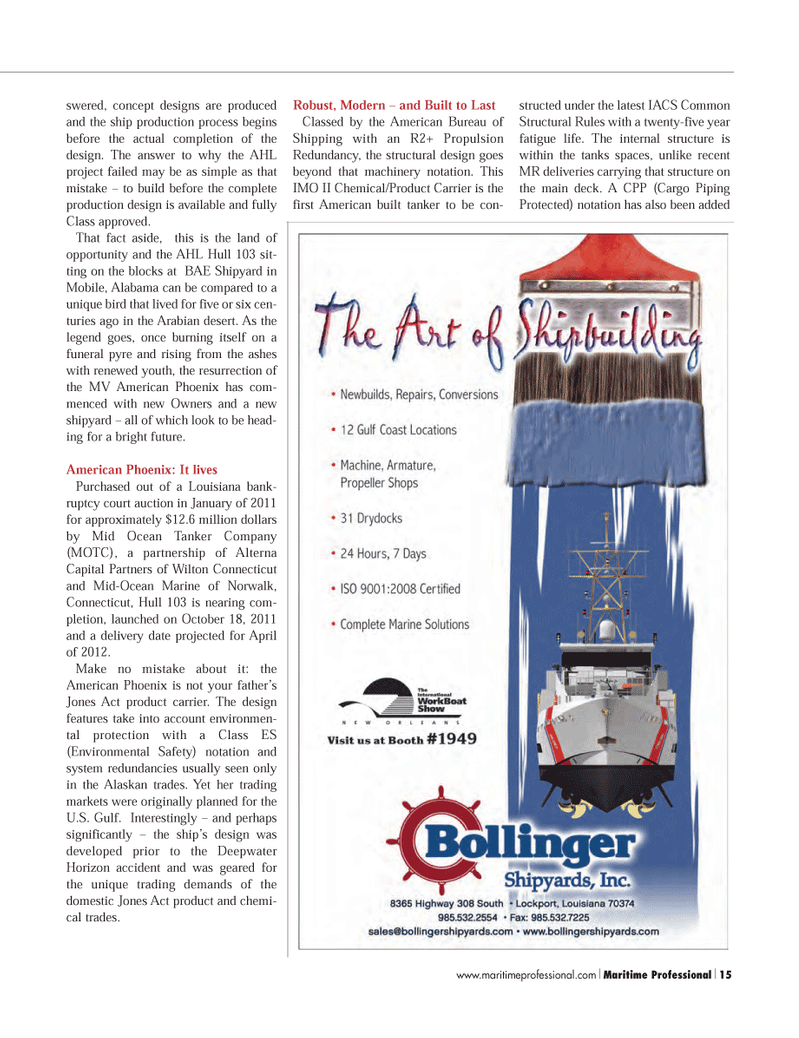
Page 15: of Maritime Logistics Professional Magazine (Q4 2011)
Classification
Read this page in Pdf, Flash or Html5 edition of Q4 2011 Maritime Logistics Professional Magazine
www.maritimeprofessional.com Maritime Professional 15 swered, concept designs are producedand the ship production process begins before the actual completion of thedesign. The answer to why the AHL project failed may be as simple as that mistake ? to build before the complete production design is available and fully Class approved. That fact aside, this is the land of opportunity and the AHL Hull 103 sit- ting on the blocks at BAE Shipyard in Mobile, Alabama can be compared to a unique bird that lived for five or six cen- turies ago in the Arabian desert. As the legend goes, once burning itself on a funeral pyre and rising from the ashes with renewed youth, the resurrection of the MV American Phoenix has com- menced with new Owners and a new shipyard ? all of which look to be head- ing for a bright future. American Phoenix: It lives Purchased out of a Louisiana bank-ruptcy court auction in January of 2011for approximately $12.6 million dollarsby Mid Ocean Tanker Company (MOTC), a partnership of Alterna Capital Partners of Wilton Connecticut and Mid-Ocean Marine of Norwalk, Connecticut, Hull 103 is nearing com-pletion, launched on October 18, 2011and a delivery date projected for April of 2012. Make no mistake about it: the American Phoenix is not your father?s Jones Act product carrier. The design features take into account environmen- tal protection with a Class ES(Environmental Safety) notation and system redundancies usually seen onlyin the Alaskan trades. Yet her trading markets were originally planned for the U.S. Gulf. Interestingly ? and perhapssignificantly ? the ship?s design was developed prior to the Deepwater Horizon accident and was geared for the unique trading demands of thedomestic Jones Act product and chemi- cal trades.Robust, Modern ? and Built to Last Classed by the American Bureau of Shipping with an R2+ PropulsionRedundancy, the structural design goes beyond that machinery notation. This IMO II Chemical/Product Carrier is thefirst American built tanker to be con- structed under the latest IACS Common Structural Rules with a twenty-five year fatigue life. The internal structure is within the tanks spaces, unlike recent MR deliveries carrying that structure on the main deck. A CPP (Cargo Piping Protected) notation has also been addedMP #4 (1-17):MP Layouts 11/7/2011 4:46 PM Page 15

 14
14

 16
16
